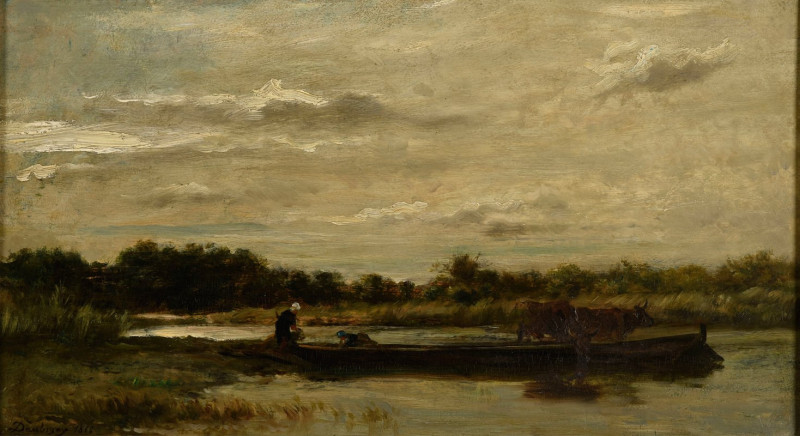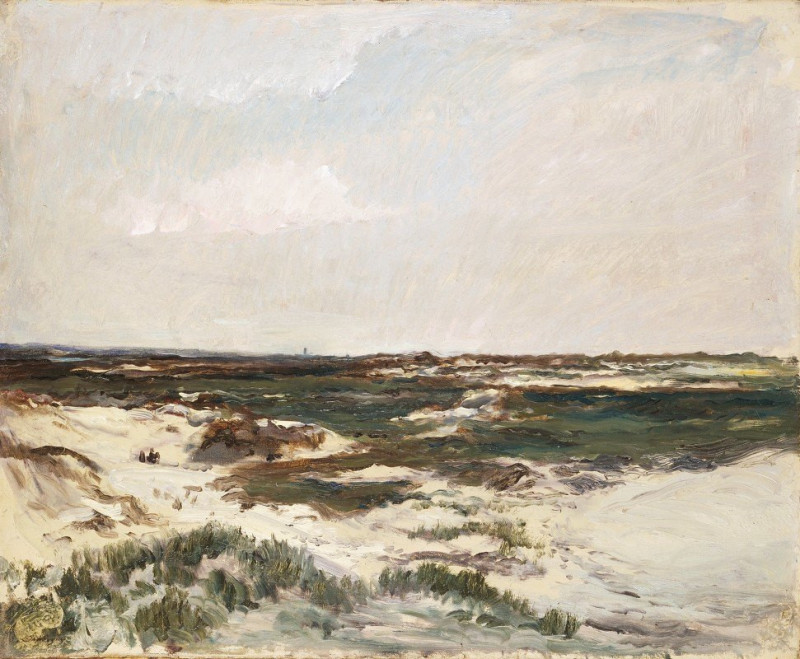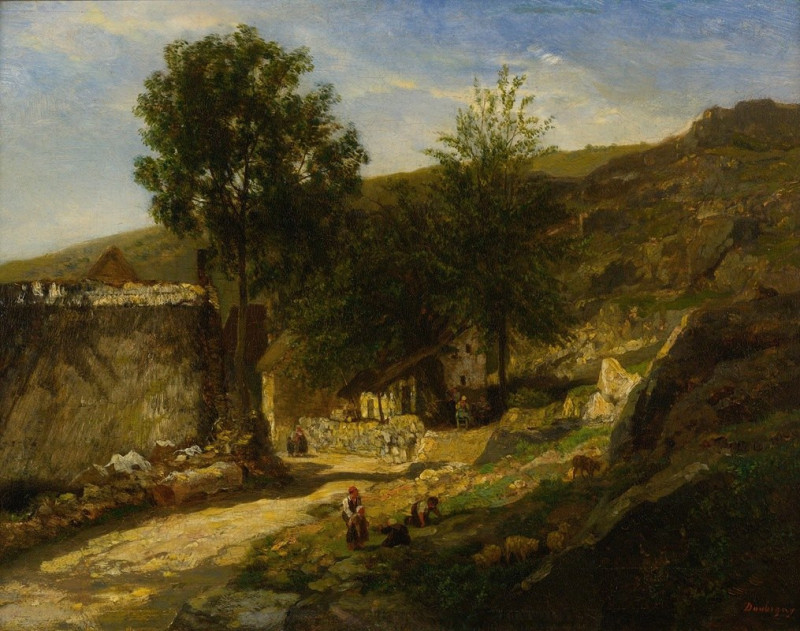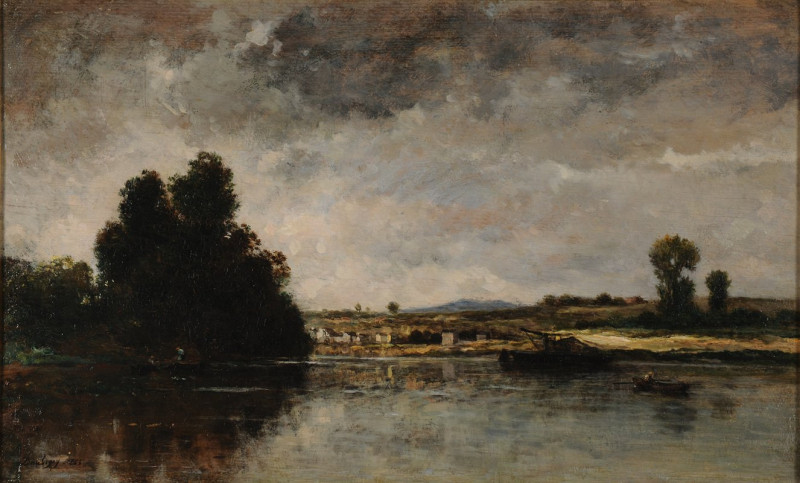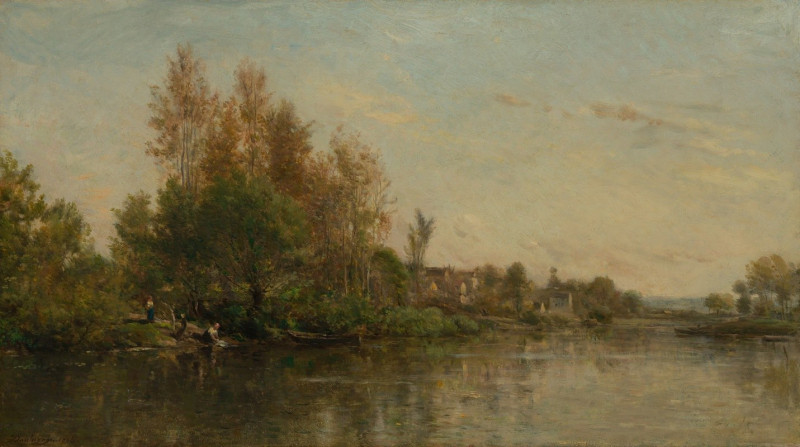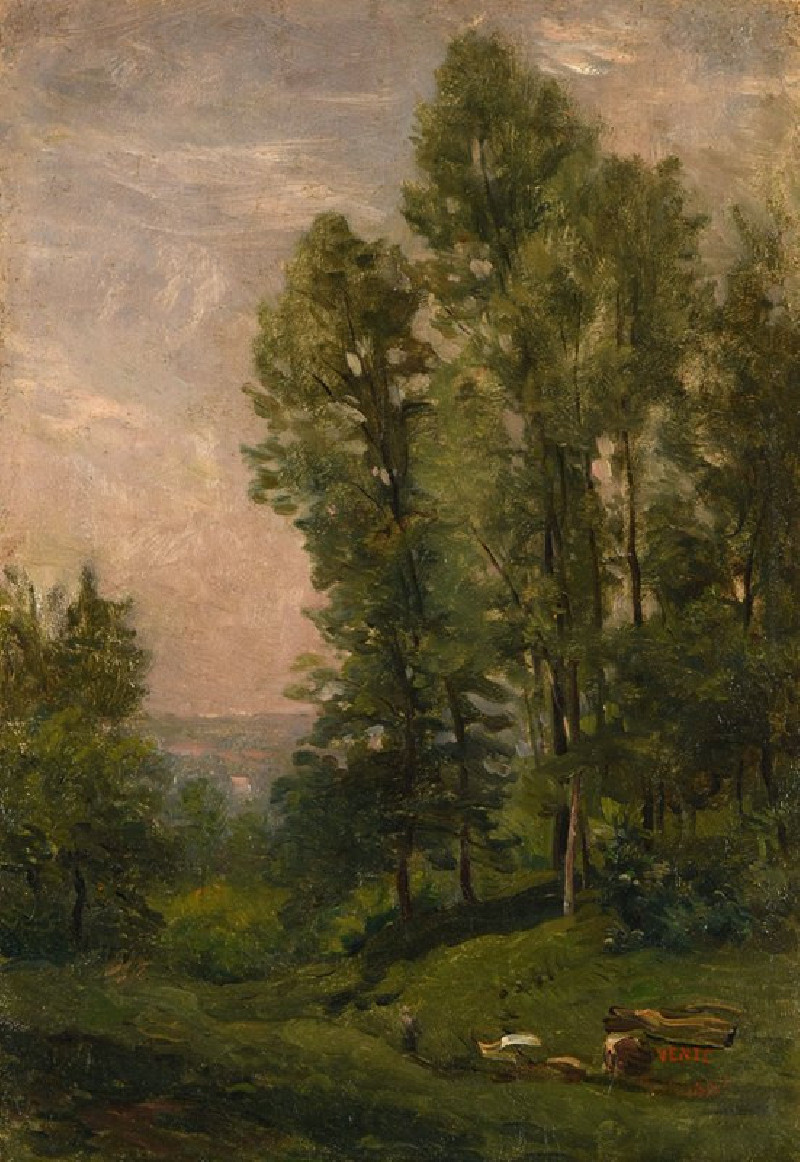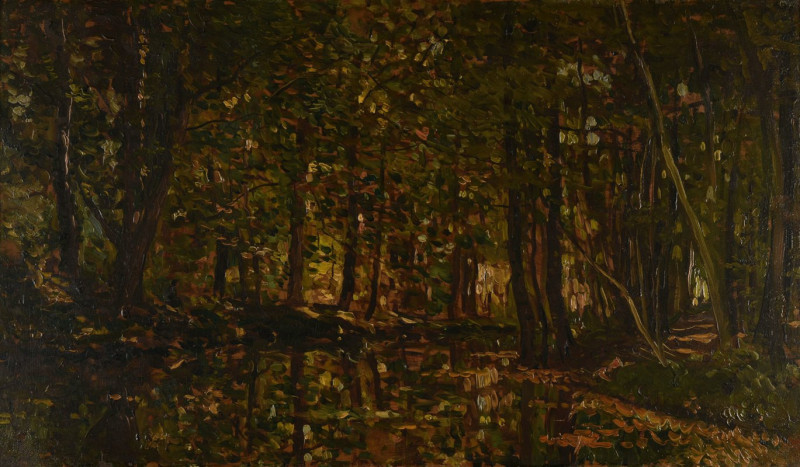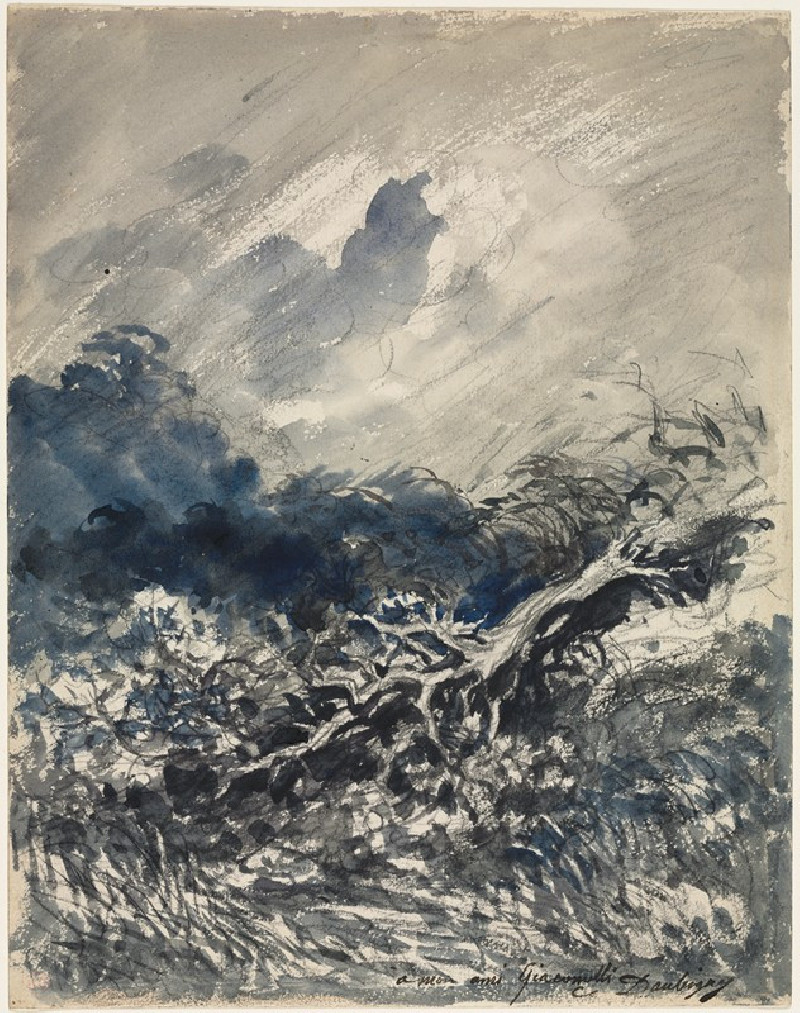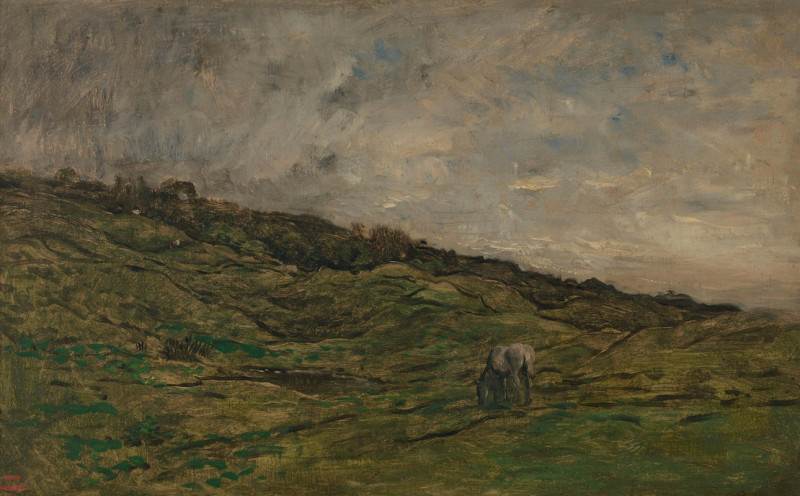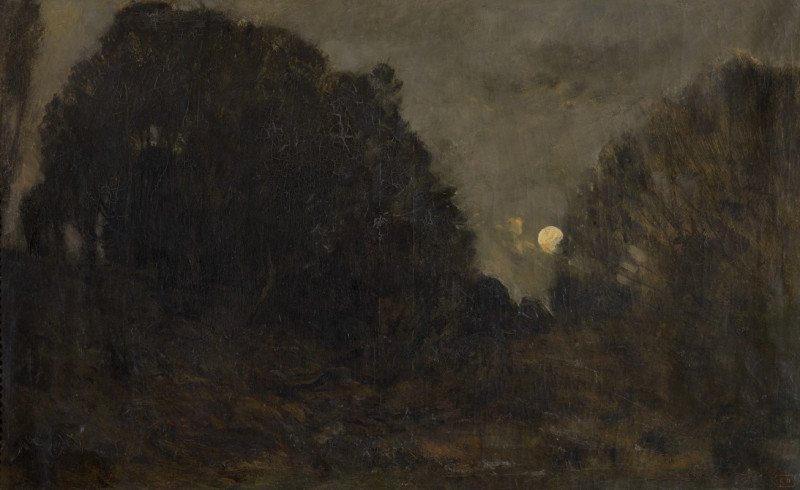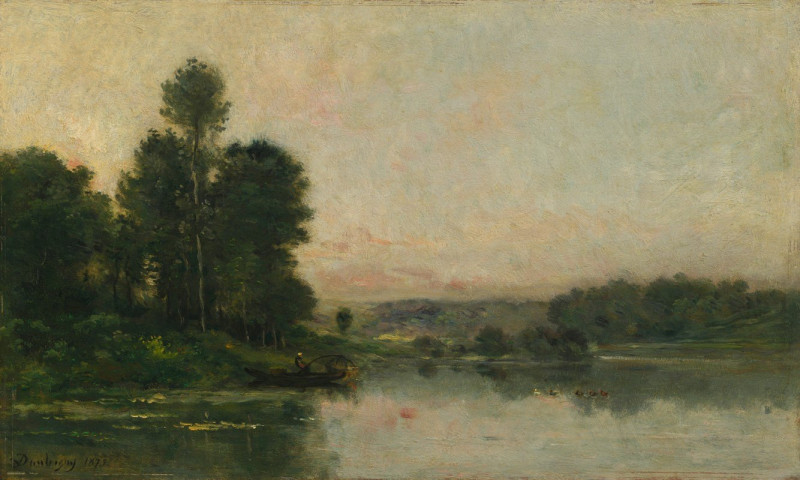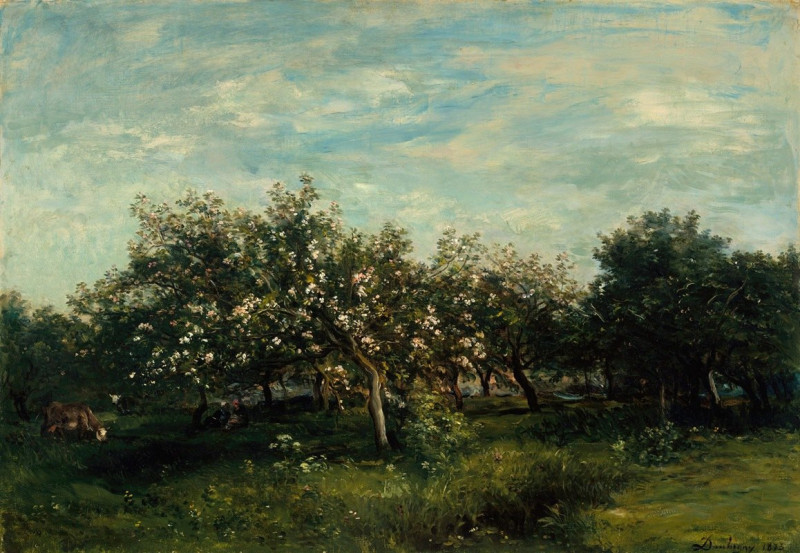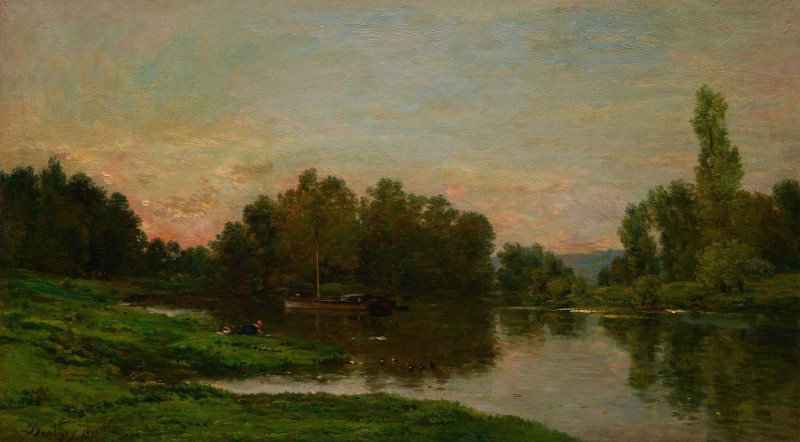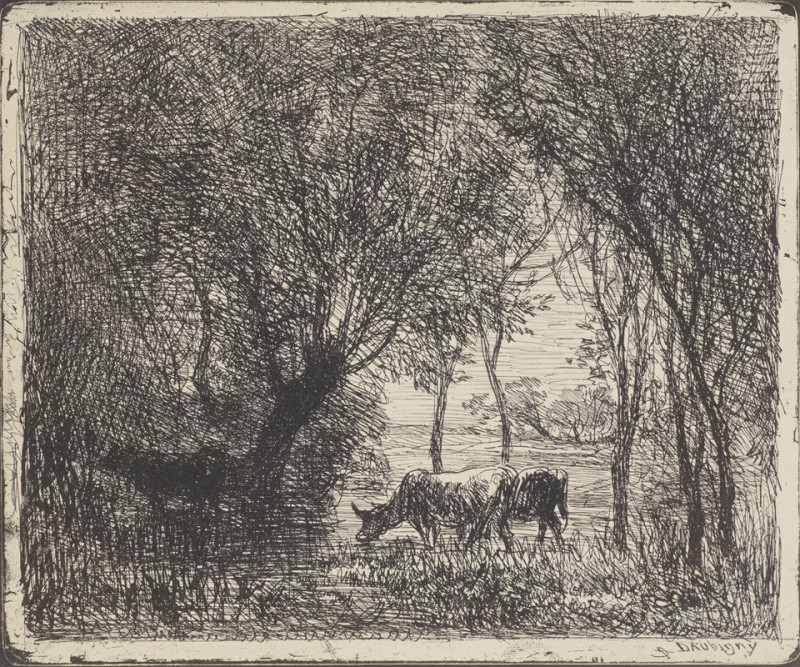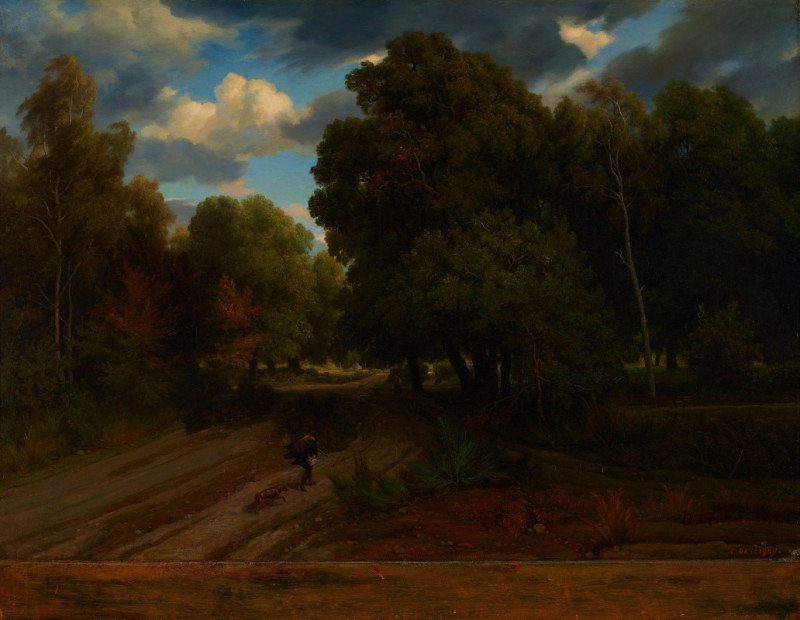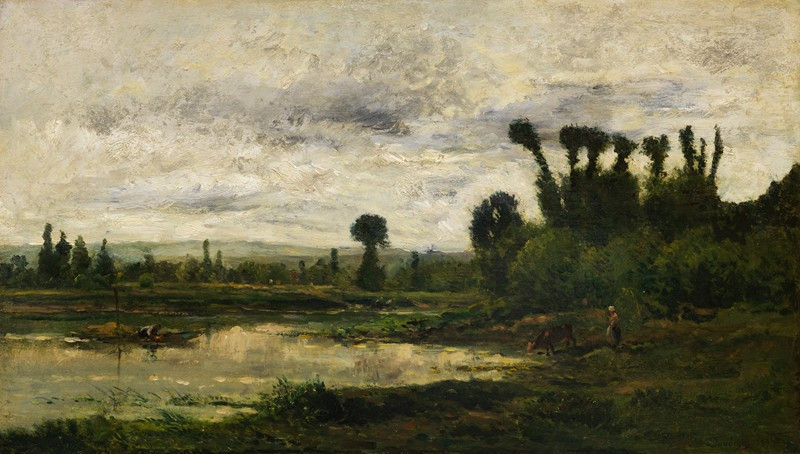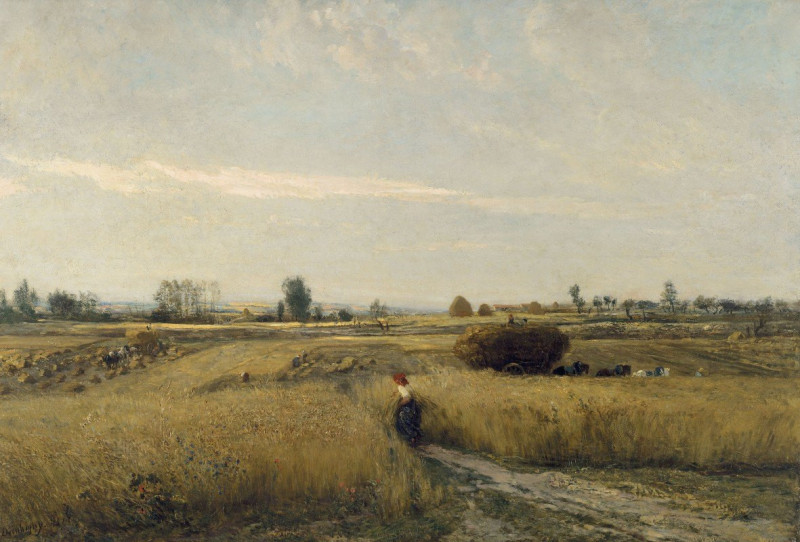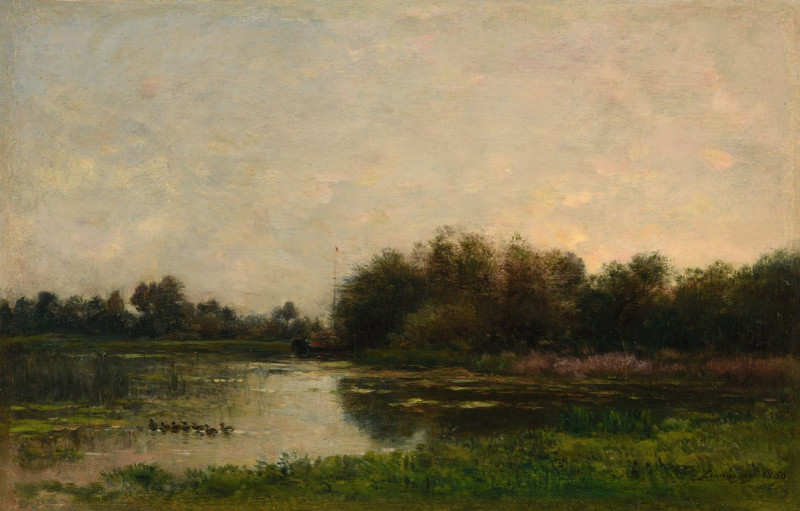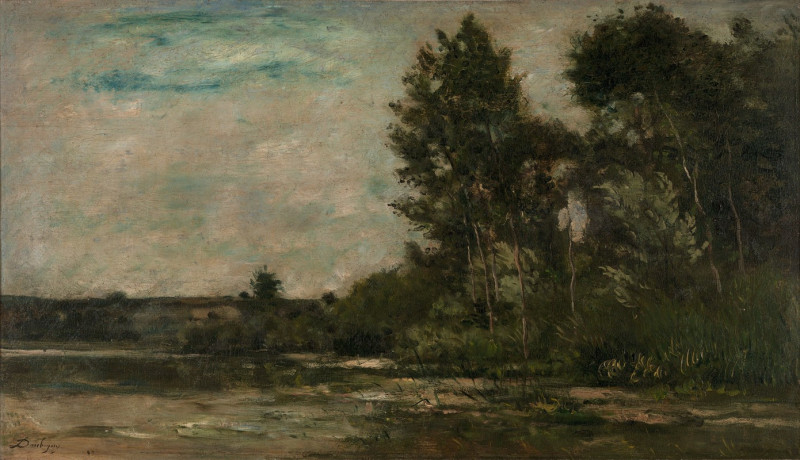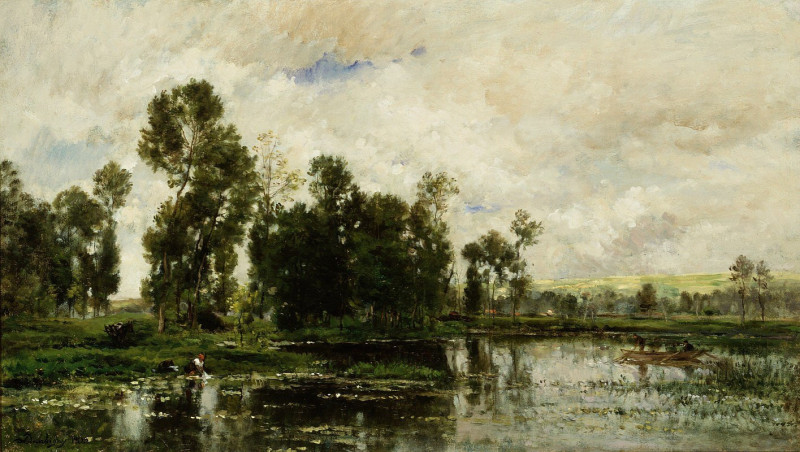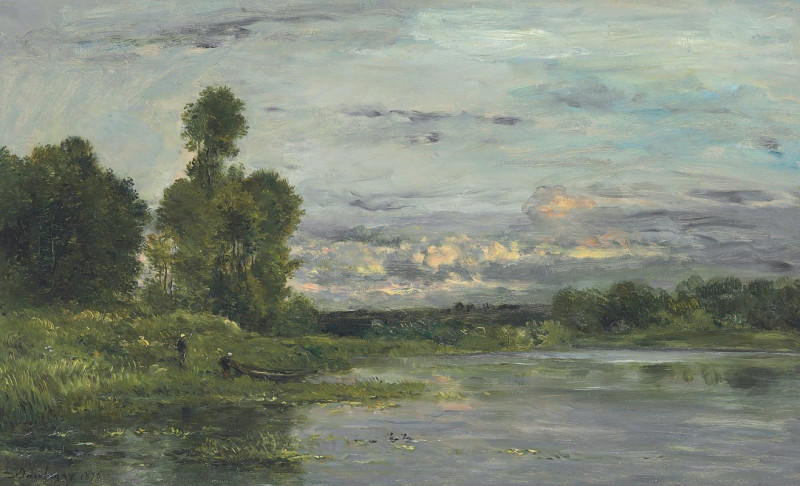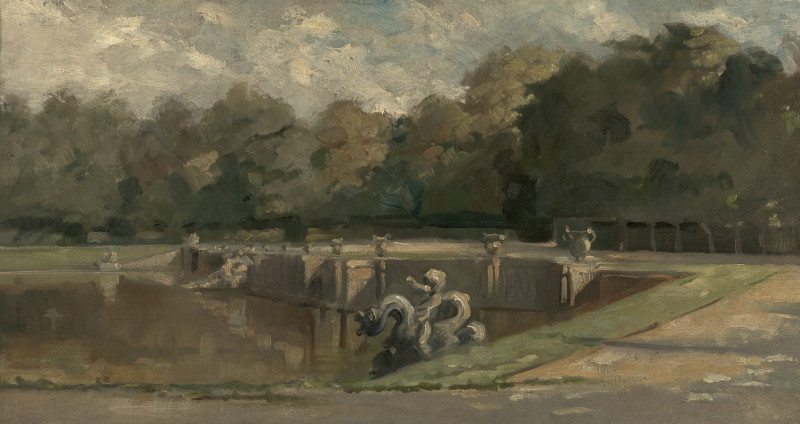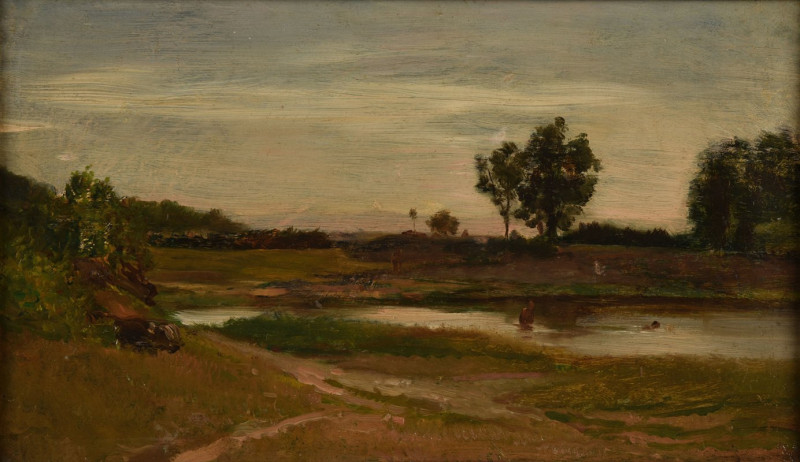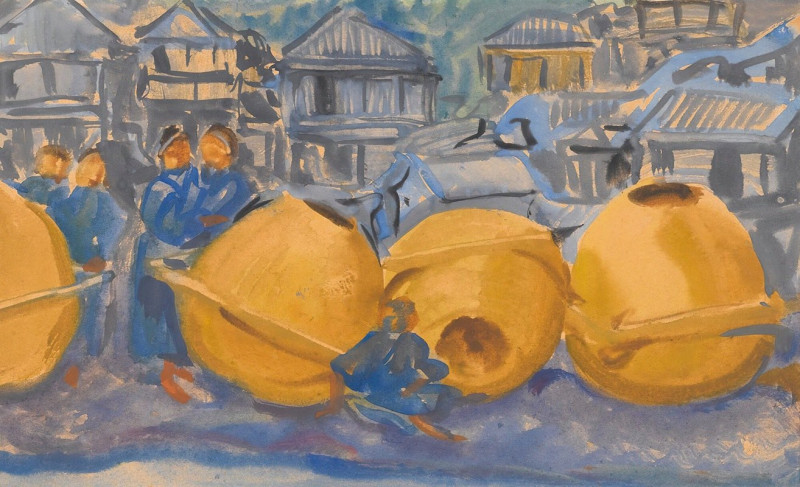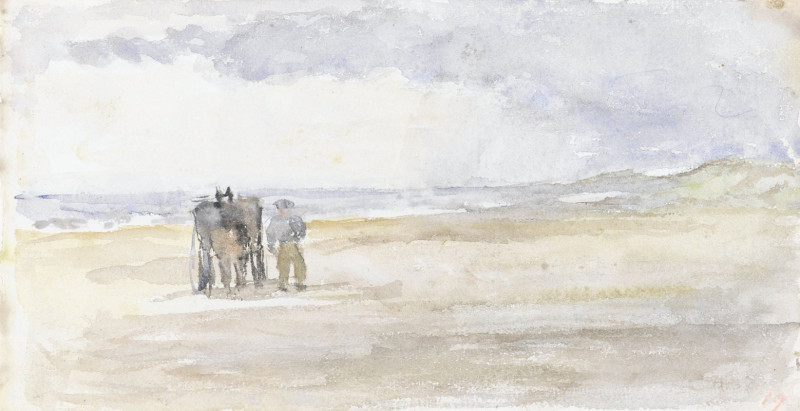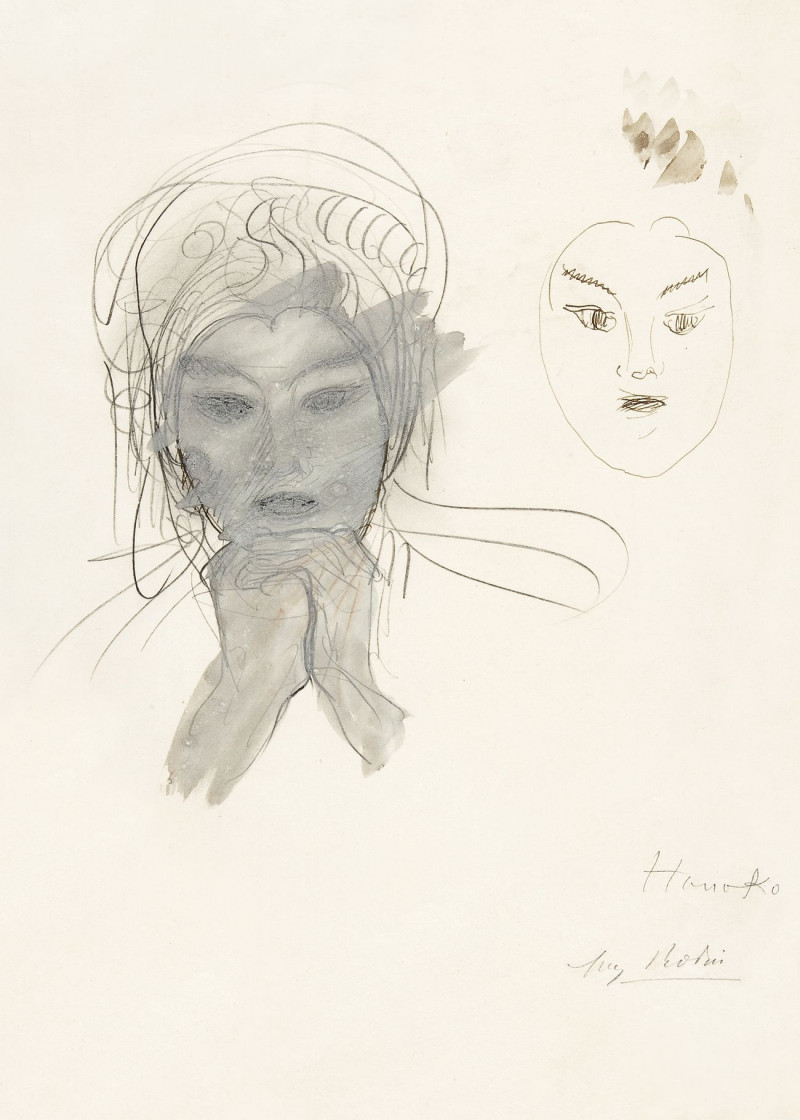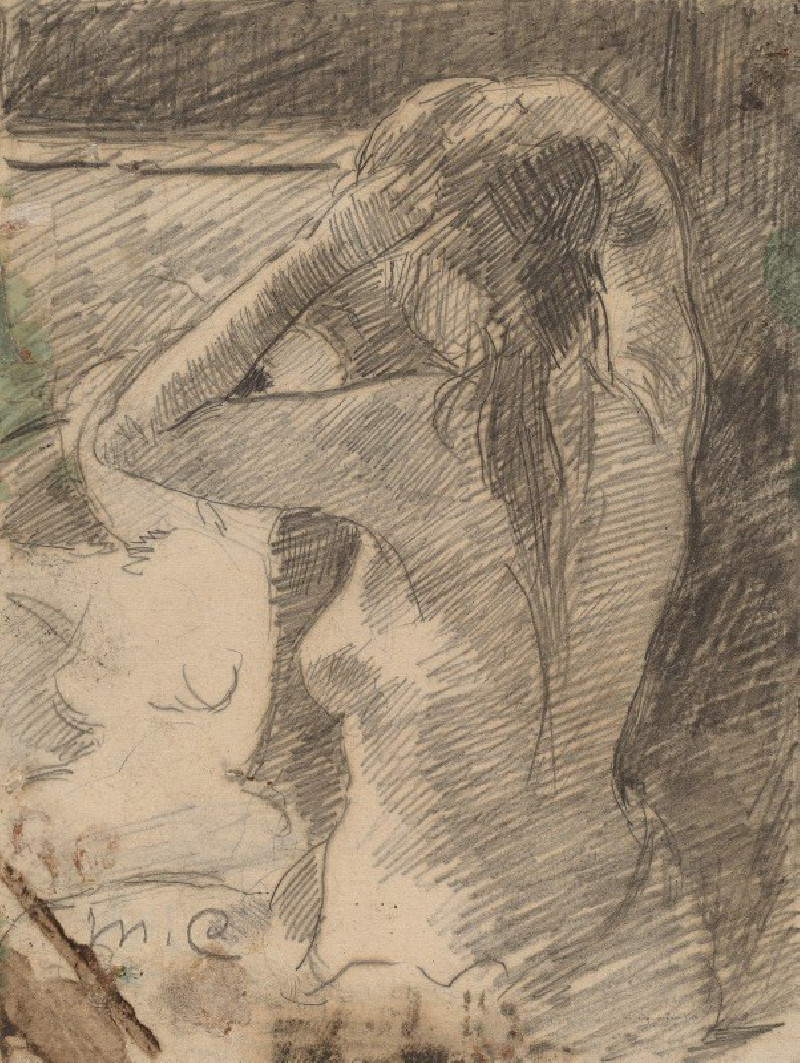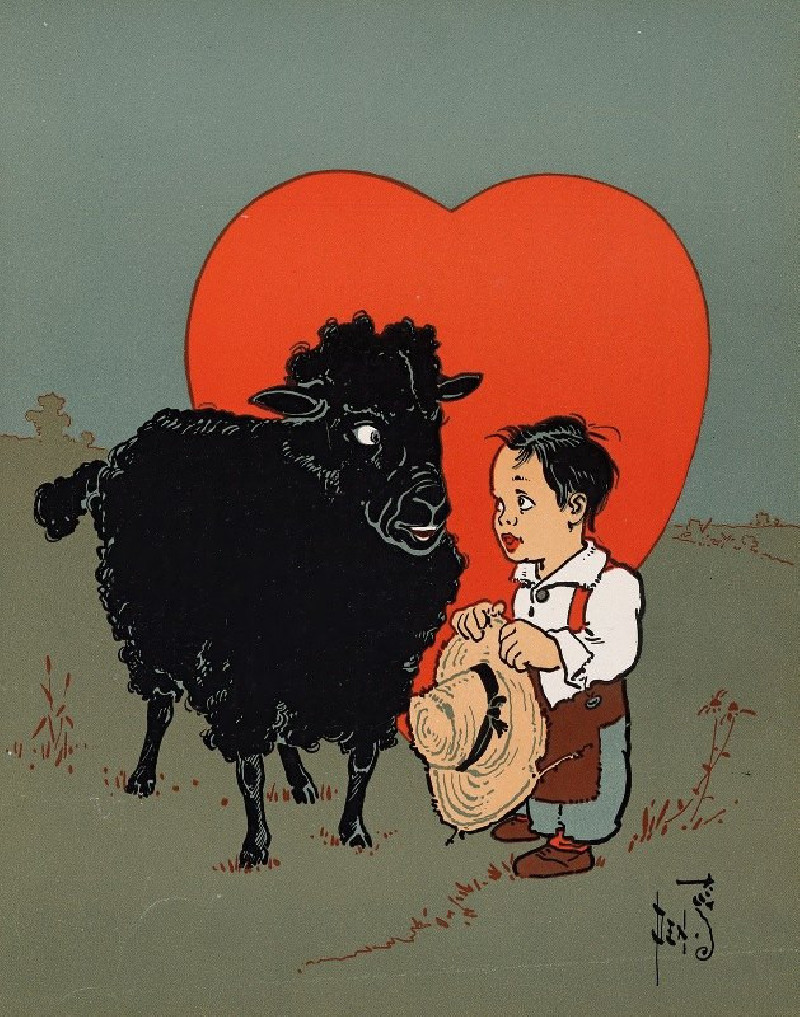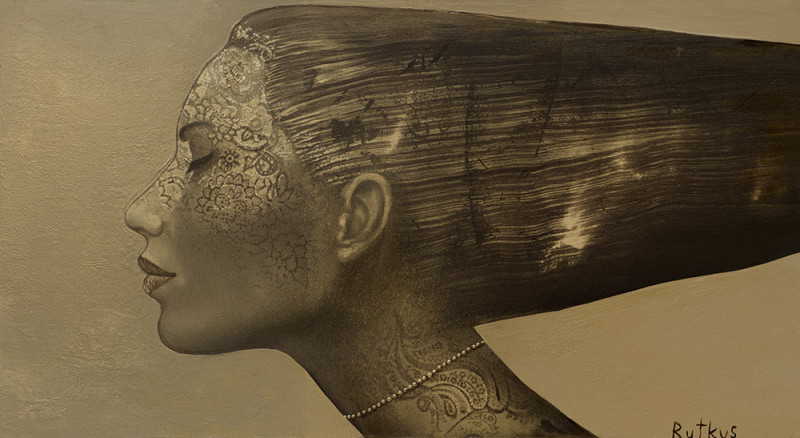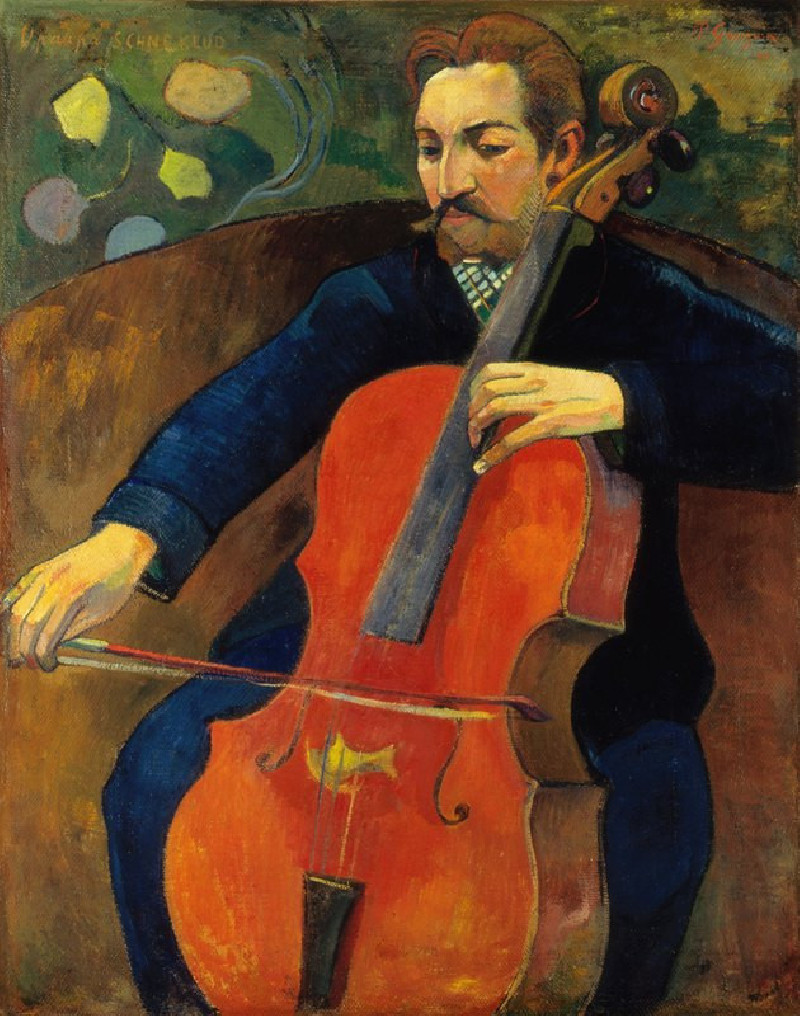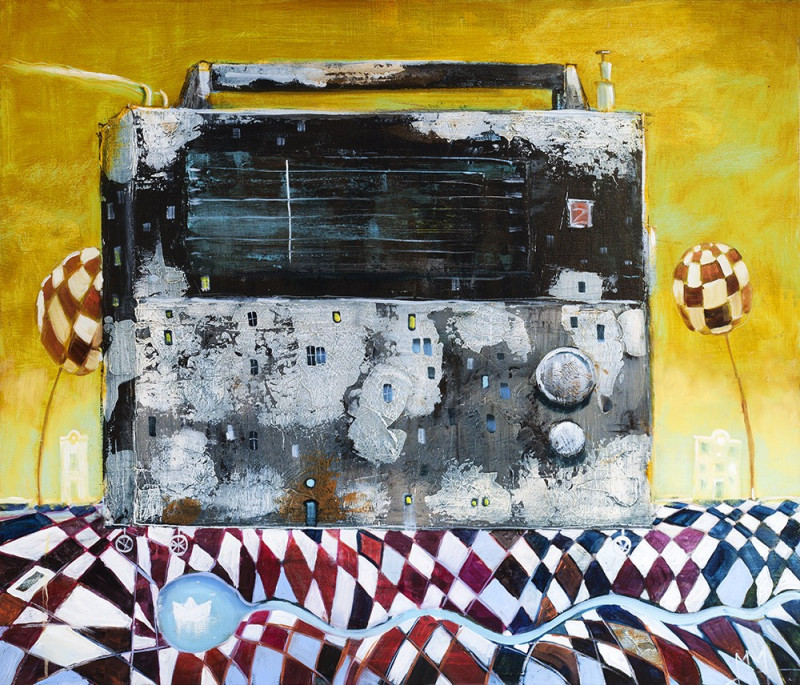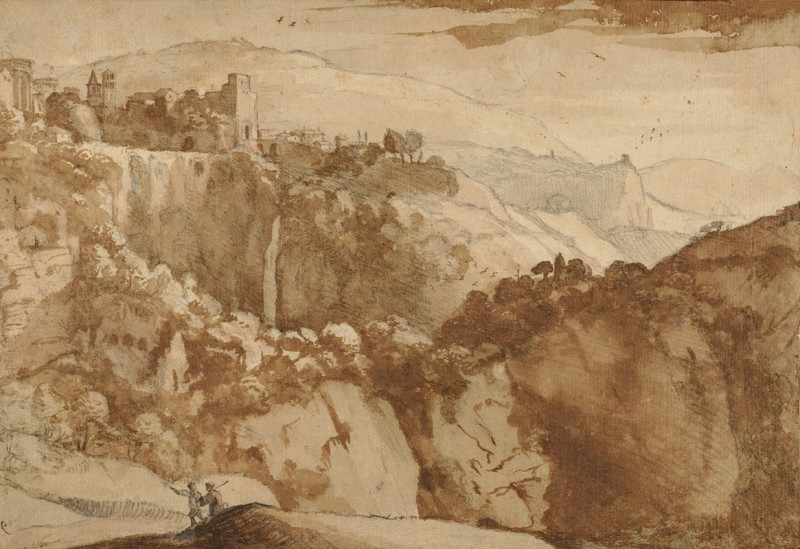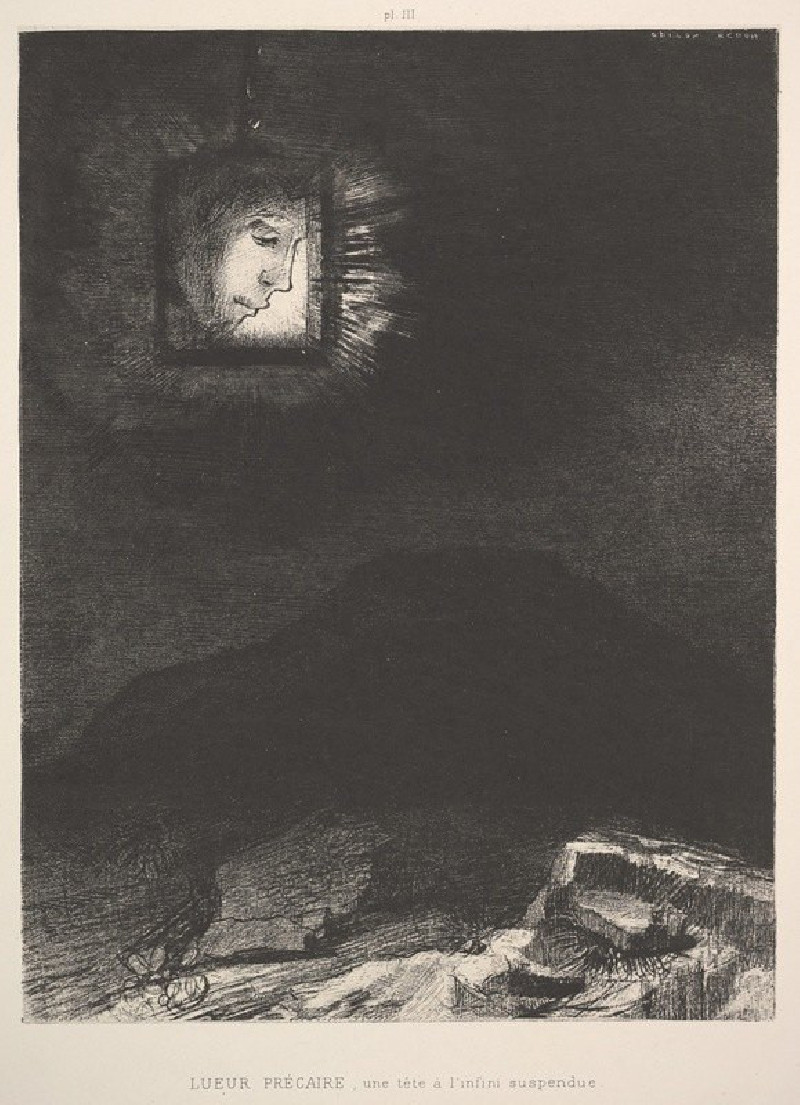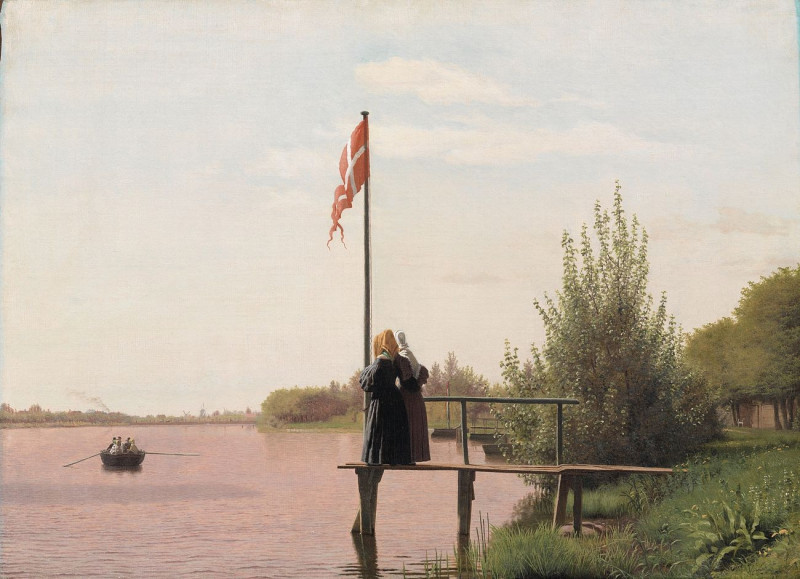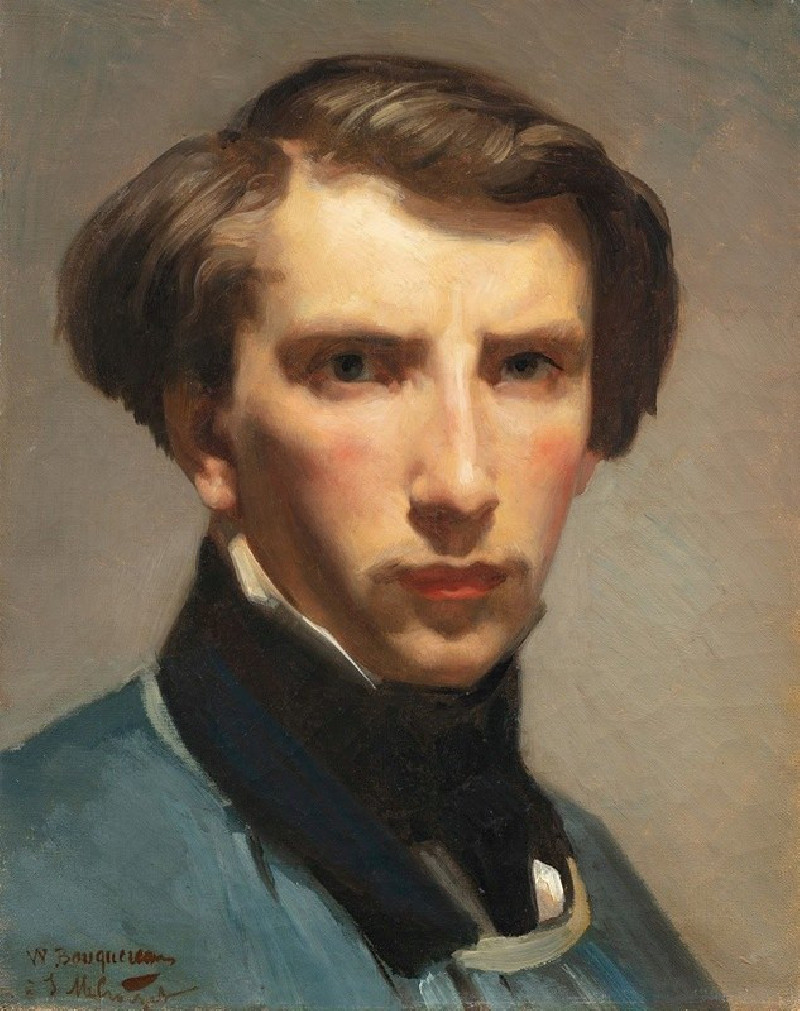Le bac (1866)
Technique: Giclée quality print
Recommended by our customers
More about this artwork
"Le bac," painted by the esteemed French artist Charles François Daubigny in 1866, depicts a serene rural scene that exudes the tranquil essence of riverside life. This evocative painting portrays the simplicity and peacefulness of nature, capturing a moment at a river crossing, or ferry ('bac' in French), commonly used in rural France during the 19th century.In the foreground, Daubigny masterfully illustrates a ferry boat being guided across the gentle ripples of a river. The boat is manned by figures diligently at work, ensuring safe passage across the water. Notably, the ferry is being loaded, or maybe unloaded, with livestock, which adds a dynamic element of rural livelihood to the scene. A pair of oxen can be distinctly seen on board, symbolizing the agricultural life of the era.The background is beautifully enveloped in a soft, atmospheric sky that reflects Daubigny's signature treatment of light and cloud. The brushwork suggests a dynamic yet soft sky, with fleeting clouds that enhance the overall mood of tranquility. On either side of the river, lush vegetation and a hint of treelines are visible, enhancing the depth and balance of the composition.This painting not only reflects the physical beauty of the French countryside but also evokes a sense of timelessness and the enduring rhythms of rural life. It is a testament to Daubigny's ability to capture both the beauty of the natural world and the simple activities that define everyday existence.
Delivery
Returns
Charles-François Daubigny (15 February 1817 – 19 February 1878) was a French painter, one of the members of the Barbizon school, and is considered an important precursor of impressionism.
He was also a prolific printmaker, mostly in etching but also as one of the main artists to use the cliché verre technique.

